Spiral galaxies are some of the most beautiful objects in the universe. We tour spring’s best and brightest.
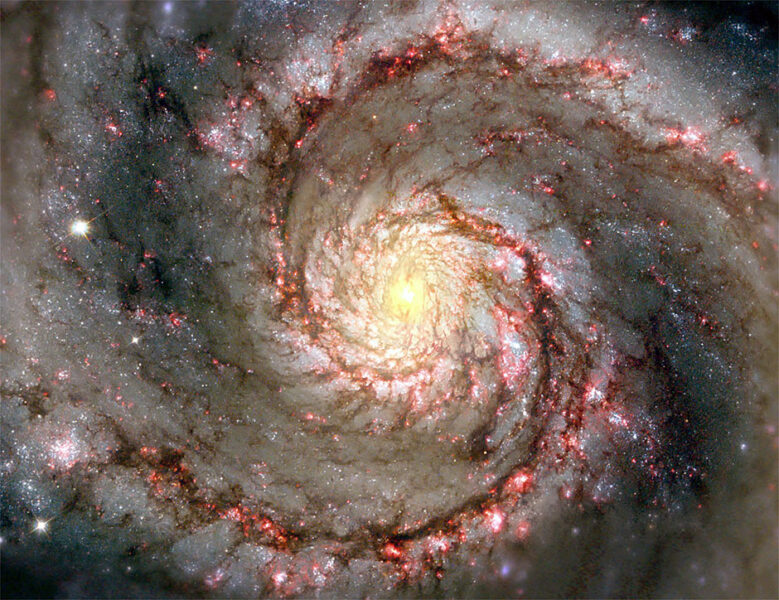
Hubble Heritage Team (STScI / AURA) / N. Scoville (Caltech)
Ever since I was a young amateur I've wanted to see spiral arms. In the telescopes of my youth galactic structure was hard to come by. While I could often distinguish a galaxy's bright core from its faint disk, arms held out on me until I could afford a larger instrument.
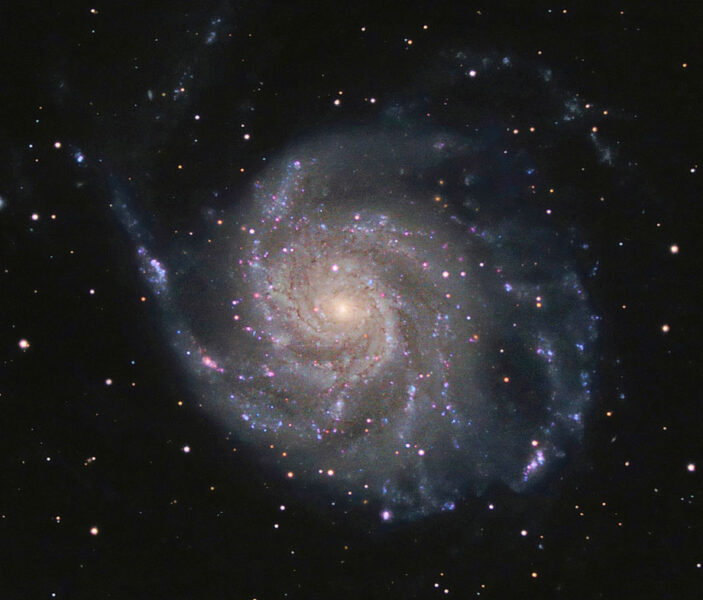
Hunter Wilson
On Earth we find spirals in sunflowers and snails, but to see it expressed in something as enormous as a galaxy transforms this familiar pattern into something truly grand. That's what I feel when I point my scope at the Whirlpool Galaxy and see its billions of suns arranged in the whorls of a spiral. Grandeur. Not to mention the joy of knowing that a shape imprinted in my very DNA resonates across the universe.
Later in life I've been able to afford telescopes in the 8- to 15-inch range, large enough to give delightful views of spiral arms in several dozen galaxies. Despite what photographs show most arms are faint and diffuse but with repeated observation and the right magnification you'll be amazed at what you can see.
Magnification vs. Visibility
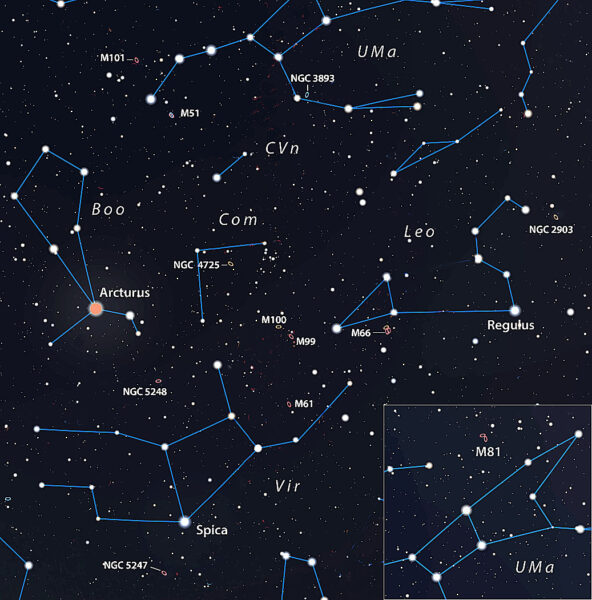
Stellarium
Most spiral galaxies appear mottled or vaguely textured at first view. High magnifications of 200× or more (coupled with a wide field of view if possible) not only darken the sky by improving contrast but also expand these structures into objects big enough for the eye to grasp. Averted vision — circling the galaxy with your gaze instead of staring directly at it — is also an important tool, particularly for glimpsing spiral arms that extend beyond the central disk. Checking what you see against a photo will help guide you to features you might otherwise overlook.
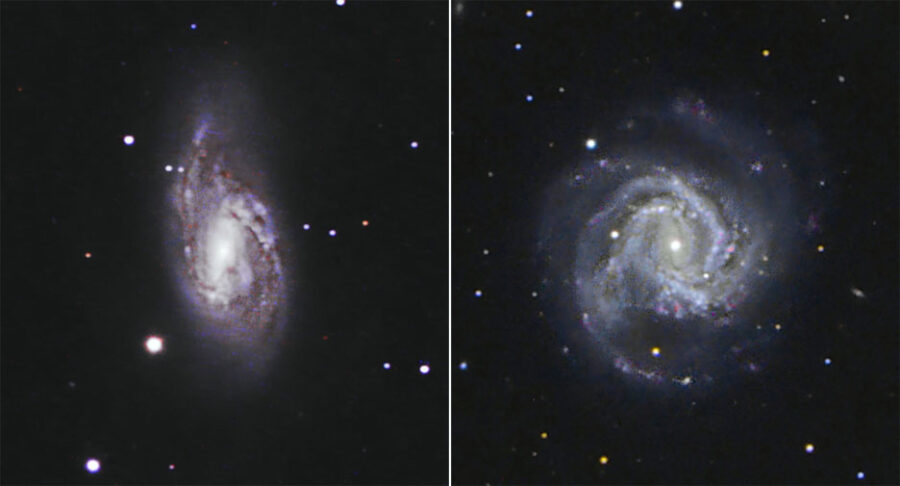
Hunter Wilson
Highly Classified
At a basic level spiral galaxies are classified by how tightly their arms are wound and whether or not they possess a bar-shaped structure of stars extending from their central bulges. An Sa (capital "S" followed by a lower case "a") galaxy has tightly wound arms. Sb indicates more loosely wound arms, Sc looser yet until the arms become diffuse and broken in Sd galaxies. Sometimes you'll see letters used in combination as in "bc" or "ab" to indicate a hybrid form.
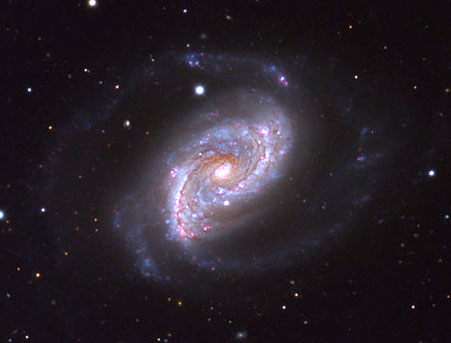
Adam Block / Mount Lemmon SkyCenter / University of Arizona
The capital letter "B" indicates a bar is present. Further classifications include SAB for weakly barred spirals, SA for spirals without a bar, and a variety of lower case letters to indicates finer details. For a more complete list click here.
Spiral arms form from density waves that reverberate through the disk and cause stars and gas clouds to temporarily pile up like backed-up traffic on the freeway. Galactic rotation spins those regions into the arcs and arms that are the hallmark of spiral galaxies.
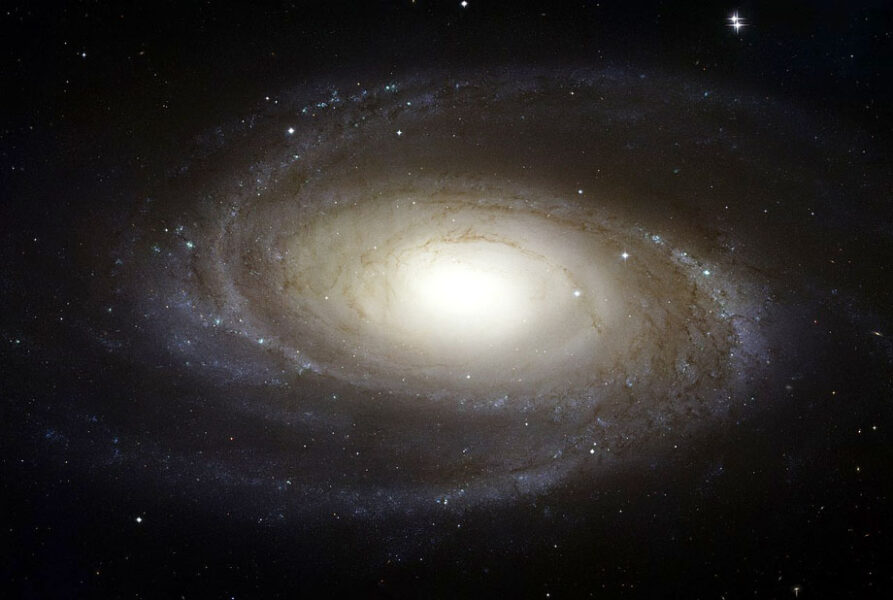
ESO
I've selected a dozen of the season's best and brightest spirals. Some are familiar faces like the Bode's Galaxy (M81) but there are a surprising number of lesser-known NGC objects that exhibit striking spirality. All my observations were made with a 15-inch (38-cm) Dobsonian under rural skies (Bortle 3) under a variety of different seeing conditions. While traces of spirality are visible with telescopes as small as 6-inches, the larger the aperture the better.
Any list is incomplete due to space restrictions. Galaxies not described but worth a visit include M83 (Hydra), M90 (Virgo), M88 (Coma Berenices), and M106 and NGC 3184 in Ursa Major. I'd love to hear what you see through your telescope. Please share your observations with us in the comments area as you spiral down these galactic rabbit holes.
Familiar Faces
The Whirlpool Galaxy (M51) in Canes Venatici is a great place to start. When I first look at the galaxy I see a confusion of arcs, but with patience and liberal use of averted vision I soon find my way. What a beautiful place this is. A section of the inner arm east of the nucleus appears brighter while the extension connecting the northern arm and neighboring NGC 5195 is faint but clearly visible with averted vision. With a magnification of 245× the arms exhibit a flocculent texture.
M99 in Coma Berenices looks delightfully dimorphic akin to some deep-space fiddler crab with one major claw and one minor. The galaxy's big spiral arm extends south and west from the nucleus and stands out more clearly than the blunted, diffuse northern arm. Like surprises? Head over to NGC 5248 located off the beaten path in southern Boötes. Magnification of 142× reveals mottling across the disk with two bright, curved spiral arcs on either side of the bright, elongated core. But at 245× I see fantastic whorls of spiral arms that remind me of a spinning lawn sprinkler. The fact that they appear and disappear with the vagaries of seeing makes for a dynamic sight!
Like M99, M66 in Leo appears lopsided. The first thing to catch your eye is the galaxy's intensely bright, north-south extended core and brilliant little nucleus. The larger of the two visible arms extends south and looks like the hand of a mitten. The fainter "finger" is less obvious and tucked into the galaxy's east side.
Moving east to Virgo we encounter M61, home to the current supernova SN 2020jfo. Its most obvious feature is a stumpy arm that extends north of the bright core before bending east and south. Another arm spouts south of the core and spills like a fountain fountain to the west. Use high magnification to distinguish the dense tangle of arms in this wonderful object.
Nearly as wide as the full Moon, M101 in Ursa Major is the largest of our featured galaxies. Use low and medium powers to discern the outline and glorious sweep of its spiral arms, home to a plethora of gigantic star clusters which ornament the arms like lights on a Christmas tree. The brightest — NGC 5471, NGC 5461, and NGC 5447 — are immediately visible at low magnification (64×). Lavish some time to fully explore this rich and amazing object.
M81, also in Ursa Major, is another large spiral with a bright, broad core and delicate pair of arms. At first sight the arms blend into the hazy disk but with care I can discern a tendril of haze that separates from the southwestern end of the disk and wraps around to the northeast. The arm appears slightly dimmer or "broken" due to a dearth of bright stars at this location. A second arm unwraps from north to south along the galaxy's west side. When I was finally able to hold both in view simultaneously the sight gave me a tingle. For a few moments I was weightless and adrift over one of the most remarkable sights in the universe.
Lesser Known Galaxies
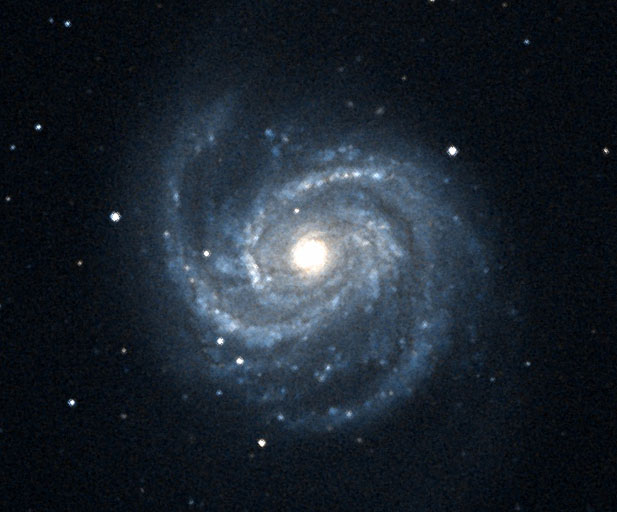
DSS2 / Aladin Sky Atlas
Back in Coma Berenices, M100 is a tease. I worked harder here than anywhere to trace out the spiral arms that show so clearly in photos. At 142× I get a sense of whorls similar to M51's appearance in a smaller telescope. Repeated observation finally revealed three arcs in the mist — a relatively bright, short segment west of the core, a narrow arc south of the nucleus, and very faint curl to the northeast.

Bob King
For simple elegance wander over to NGC 5247 in southern Virgo to see a heavenly backwards S. Two delicate arms worm their way from a compact, bright core in an obvious spiral pattern. The northern arm is a little fainter and truncated at its western terminus. NGC 4725 in Coma Berenices has thick spiral arcs that remind me of a pair of earmuffs. The brighter and wider of the pair lies across a wide, dark gap southwest of the nucleus.
NGC 2903 in Leo is a beautiful object with an extended, bright nuclear region set in a softly glowing disk highlighted by brighter patches. With averted vision and 245x a pair of wispy spiral arms emerge from either end. Finishing off in Ursa Major, NGC 3893 made me grin because the main spiral arm along the galaxy's eastern side looks like a bad comb-over. A second fainter arm uncoils from the west.
| Name | R.A. | Dec. | Type | Size | Magnitude |
| M51 | 13h 30′ | +47° 11′ | SA(s)bc pec | 11.2′ × 6.9′ | 8.4 |
| M99 | 12h 19′ | +14° 25′ | SA(s)c | 5.4′ × 4.7′ | 9.9 |
| NGC 5248 | 13h 38′ | +08° 53′ | SAB(rs)bc | 6.2′ × 4.5′ | 10.3 |
| M66 | 11h 20′ | +12° 59′ | SAB(s)b | 9.1′ × 4.2′ | 8.9 |
| M61 | 12h 22′ | +04° 28′ | SAB(rs)bc | 6.5′ × 5.8′ | 9.7 |
| M101 | 14h 03′ | +54° 21′ | SAB(rs)cd | 28.8′ × 26.9′ | 7.9 |
| M81 | 09h 56′ | +69° 04′ | SA(s)ab | 26.9′ × 14.1′ | 6.9 |
| M100 | 12h 23′ | +15° 49′ | SAB(s)bc | 7.4′ × 6.3′ | 9.4 |
| NGC 5247 | 13h 38′ | –17° 53′ | SA(s)bc | 5.6′ × 4.9′ | 10.0 |
| NGC 4725 | 12h 50′ | +25° 30′ | SAB(r)ab pec | 10.7′ × 7.6′ | 9.4 |
| NGC 2903 | 09h 32′ | +21° 30′ | SAB(rs)bc | 12.6′ × 6.0′ | 9.0 |
| NGC 3893 | 11h 49′ | +48° 43′ | SAB(rs)c | 4.5′ × 2.8′ | 10.5 |
 6
6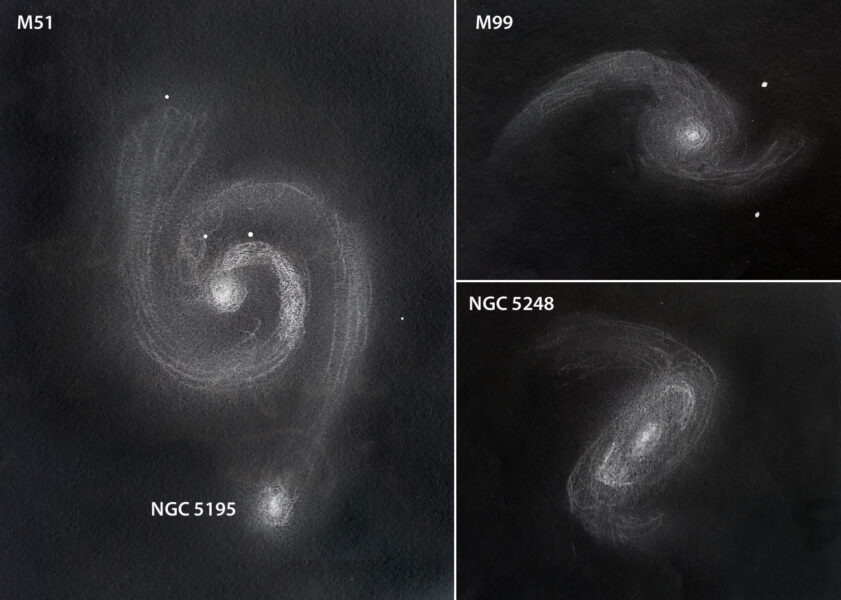

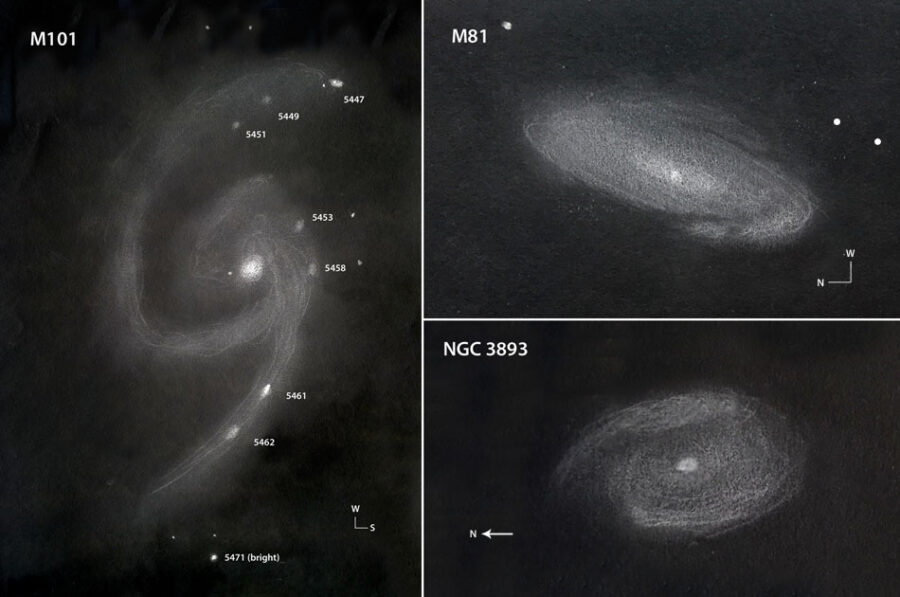









Comments
tom-dasilva
May 20, 2020 at 1:15 pm
Good targets for Memorial Day weekend. Thanks Bob.
You must be logged in to post a comment.
Bob KingPost Author
May 20, 2020 at 2:45 pm
That sounds just about right, Tom. I hope you have clear skies. If you'd like, report back and share what you saw. Enjoy.
You must be logged in to post a comment.
Anthony Barreiro
May 20, 2020 at 7:42 pm
I love your sketches, Bob. They convey a clear sense of what these galaxies look like through an eyepiece. And your description of being weightless and adrift above M81 gave me a chill.
I'll have to wait for a trip to a dark-sky star party during galaxy season for my next chance to see these galaxies through a big telescope. I'm grateful to folks who transport and set up hundreds of pounds of gear and then generously let others have a look.
After looking at your sketch of NGC 3893, I hope that galaxy never gets its own reality TV show and Twitter account.
You must be logged in to post a comment.
Bob KingPost Author
May 20, 2020 at 8:18 pm
Anthony,
Thank you! And you cracked me up with that last comment — thanks for that 😉
You must be logged in to post a comment.
G-Pop
May 26, 2020 at 7:46 am
Great article and sketches, Bob! Thanks for all of the information!
Quick question, as I am very new to Astronomy and telescoping, am I to understand from your article that if I want to see any of these galaxies, I would need at least an eight inch telescope?
I have a 5.12" telescope that I just got. Are there any galaxies, or other DSO's, you could recommend that I can see with my telescope?
Thanks again for all of the great information!
You must be logged in to post a comment.
Bob KingPost Author
May 26, 2020 at 10:53 am
Hi G-Pop,
Thank you! If you want to see obvious spiral structure you will need an 8-inch or larger scope however almost all of the galaxies are visible in a 5.12" telescope. Except for M51 I don't think any of the others will show spiral structure but some will show texture (mottling) that hint at their underlying structure. Take a look, especially at M51, and write back to tell us what you see.
You must be logged in to post a comment.
You must be logged in to post a comment.